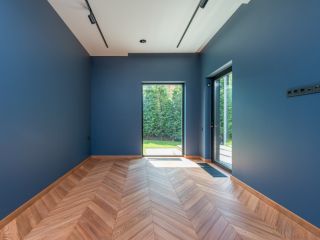
Drywall texturing is more than just a finishing touch; it's an art that can dramatically enhance the appeal of your walls and ceilings. At Drywall Repair Sunland, we understand the importance of a well-textured surface in creating the perfect ambiance for your space. Let's dive into the world of drywall texturing and explore the various methods that can bring your walls to life.
Understanding Drywall Texturing
Texturing serves multiple purposes:
- Enhances visual appeal
- Hides imperfections in drywall installation
- Adds depth and character to rooms
- Improves acoustics in some cases
Whether you're working with fresh drywall or refreshing existing surfaces, proper texturing can make all the difference.
Essential Tools for Texturing
- Air-Powered Texture Gun: The go-to tool for professional finishes
- Paintbrush or Roller: For smaller projects or specific texture styles
- Mixing Tools: Paddle mixers and drills for perfect compound consistency
- Trowels and Knives: For applying and shaping certain textures
Preparing for Texturing
Before applying texture, ensure:
- Walls are clean and dry
- Any repairs are completed and sanded
- Primer is applied if necessary
- The room is well-ventilated
Popular Texturing Techniques
1. Orange Peel Texture
- Appearance: Resembles the skin of an orange
- Application: Sprayed on using a texture gun
Tip: Adjust air pressure for desired splatter size
2. Knockdown Texture
- Appearance: Flattened orange peel, creating a stucco-like effect
- Application: Spray texture, then flatten with a knife
Tip: Wait for the right consistency before knocking down
3. Slap Brush Texture
- Appearance: Overlapping, random patterns
- Application: Apply compound, then create patterns with a slap brush
Tip: Practice on a sample board to perfect your technique
4. Swirl Texture
- Types: Sand swirl and mud swirl
- Application: Create circular patterns with a brush or roller
Tip: Maintain consistent pressure for uniform patterns
5. Popcorn Texture
- Appearance: Resembles popcorn, popular for ceilings
- Application: Sprayed on with a hopper gun
Tip: Consider modern alternatives due to potential asbestos in older applications
6. Rolled Texture
- Appearance: Varies based on roller pattern
- Application: Use textured rollers on wet compound
Tip: Experiment with different roller patterns for unique effects
Advanced Texturing Tips
- Consistency is Key: Maintain the same mixture ratio throughout the project
- Practice Makes Perfect: Always test on a sample area before tackling the entire wall
- Layer It Up: Some textures benefit from multiple layers for depth
- Consider Lighting: Different textures react differently to various lighting conditions
Choosing the Right Texture for Your Space
Consider factors like:
- Room function (e.g., high-traffic areas may benefit from easier-to-clean textures)
- Existing decor and architectural style
- Personal preferences and maintenance willingness
Professional vs. DIY Texturing
While DIY texturing can be rewarding, professional application ensures:
- Consistent results across large areas
- Proper preparation and application techniques
- Compliance with local building codes and regulations
Call to Action
Ready to transform your walls with expert texturing? Drywall Repair Sunland is here to help! Our team of skilled professionals can bring your vision to life, ensuring flawless results that stand the test of time. Contact us today for a free consultation and quote. Let's create beautiful, textured walls that elevate your space to new heights!
For more information on drywall texturing techniques and their impact on indoor air quality, visit the Environmental Protection Agency's Indoor Air Quality page.
Remember, the perfect texture can turn ordinary walls into extraordinary spaces. Trust Drywall Repair Sunland to deliver excellence in every project, big or small.

